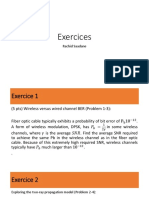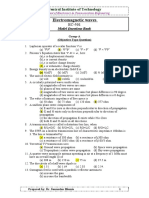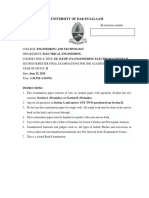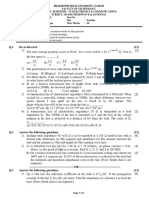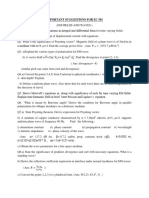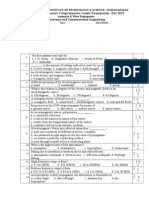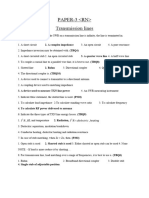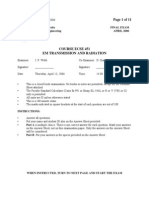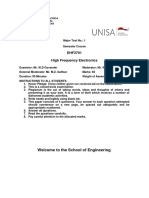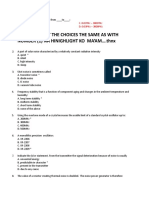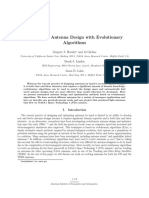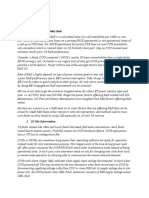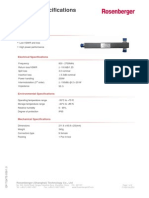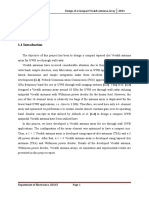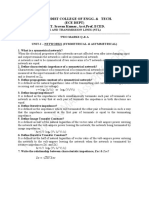0% found this document useful (0 votes)
100 views3 pages10week 1 Assignment Solution
This document contains 20 multiple choice questions about millimeter wave technology. It covers topics like the millimeter wave frequency band, how power and attenuation vary with distance and frequency, transmission line characteristics, and losses associated with millimeter wave systems. The questions test understanding of concepts like emissivity, reflectivity, surface waves, propagation modes, and skin effect.
Uploaded by
giri ssCopyright
© © All Rights Reserved
We take content rights seriously. If you suspect this is your content, claim it here.
Available Formats
Download as PDF, TXT or read online on Scribd
0% found this document useful (0 votes)
100 views3 pages10week 1 Assignment Solution
This document contains 20 multiple choice questions about millimeter wave technology. It covers topics like the millimeter wave frequency band, how power and attenuation vary with distance and frequency, transmission line characteristics, and losses associated with millimeter wave systems. The questions test understanding of concepts like emissivity, reflectivity, surface waves, propagation modes, and skin effect.
Uploaded by
giri ssCopyright
© © All Rights Reserved
We take content rights seriously. If you suspect this is your content, claim it here.
Available Formats
Download as PDF, TXT or read online on Scribd
/ 3

